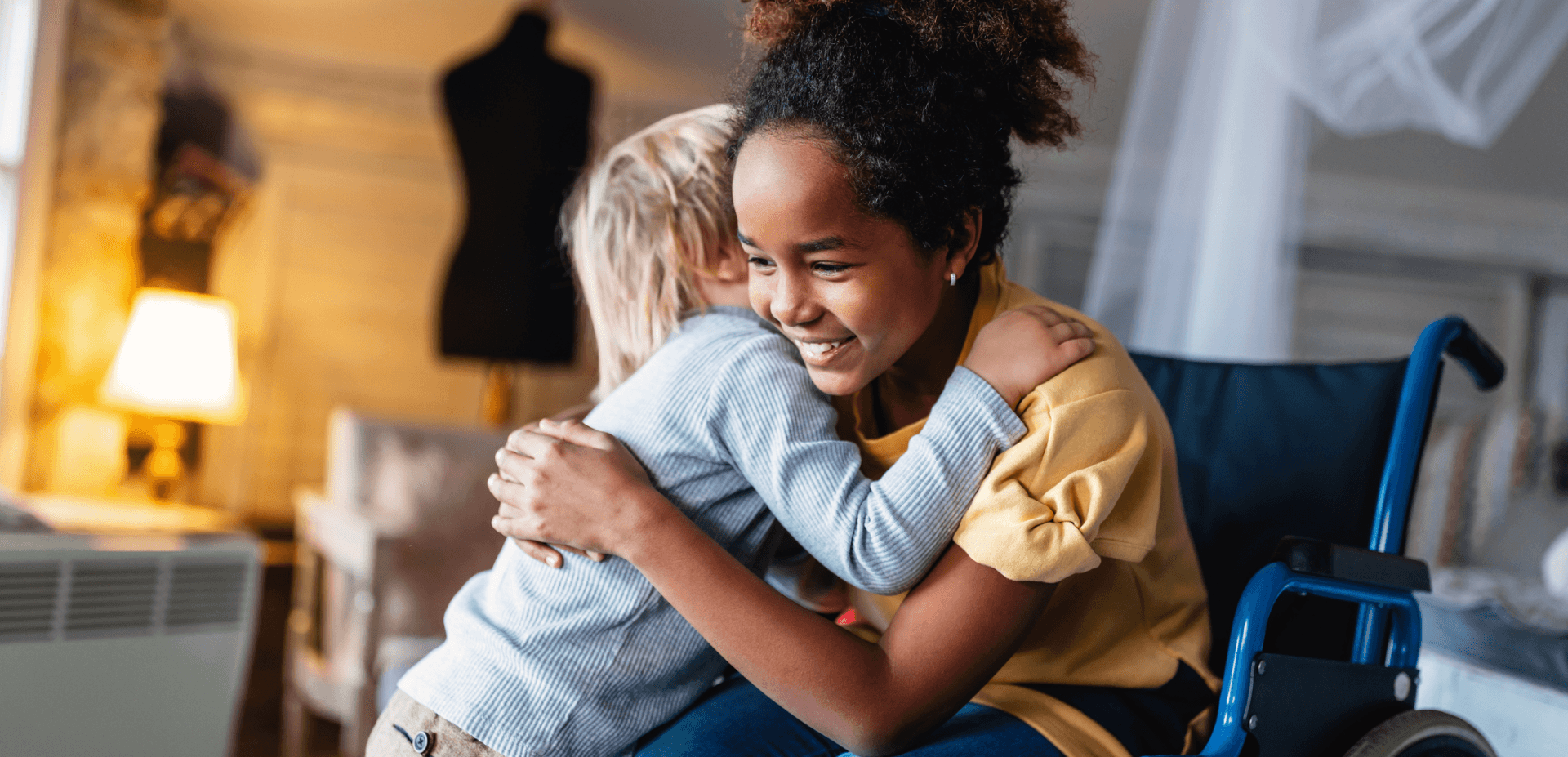How to teach kids to be an ally and an advocate for themselves and for others

By Brightline, Feb 19, 2025
Every person is different. Yes, humans have inherent and important similarities. And in many ways, we are more alike than not. We laugh when we feel joy. We cry when we’re hurt. We need comfort, friendship, and a sense of purpose.
But the differences matter, too. Some of those differences are part of who someone is and how they were made. Others are new parts of who someone is (not something with which they were born). Either way, the differences aren’t necessarily things to be ignored. In fact, it’s really powerful for anyone who looks or feels different to also feel seen and acknowledged as whole, just as they are.
Some visible differences in people that your child could notice might be:
Darker or lighter skin color
Scars or birthmarks
Textured hair (or no hair at all)
Longer, shorter, or missing limbs
Pronounced or atypical facial features
A wheelchair, walker, or prosthetic limb
Speaking with an accent or being nonverbal
Shaking or other uncontrolled movements
Kids can’t choose the skin, hair, body, language skills, or abilities they are born with. When a child looks different than most kids around them, responses from the people around them can start to define how they feel about themselves. Negative attention can enforce feelings like self-doubt or worry. Positive attention can bring up feelings of pride, security, and belonging.
You can teach your child that noticing differences about someone and choosing to stand by them in friendship is what being an ally is all about — especially when others are doing the opposite. An ally leads with kindness and inclusivity. When another child makes fun of someone with differences, an ally speaks up for the victim.
Being an ally, or standing up for a friend, can take courage. But teaching your child how to raise their voice in support of someone who needs it is a great life lesson — one that includes speaking up for themselves, too.
Advocacy: Learning to speak up for others
Helping your child find their voice, and to use it for themselves and others, starts at home. You can encourage your child to speak up for what they believe and how they feel. A great place to start: Building self-confidence and communication skills.
Here are four ideas how:
Teach them more expressive language
When your child knows how to express what they need, they’re more likely to ask for it. Rather than “Give me that” they can learn to say “Can I please have that — I need it to finish my homework” or “Can I trade you this toy for that one?” It also helps them understand how to speak up for others. For example, instead of confronting with “You’re rude” or staying quiet, they might stand up for a friend by saying “That isn’t a nice thing to say” or “You’re hurting his feelings.”
Model using that expressive language
When you’re busy trying to make dinner, it’s easy to blurt out “Stop doing that” when playtime gets to be too much. But when you model saying why it’s important, you’re opening up more room for cooperation. Try using more expressive language like “When you run through the kitchen, I worry you’ll get hurt because I’m cooking on a hot stove. Please play in the other room for now.”
Practice at home
It can be hard (even as an adult!) to know what to say in a stressful moment. If your child or a friend of theirs is getting teased, their first response might be to burst into tears or get angry. But if you role play those hard situations at home first, it can help them feel more confident. And it gives them language they can use on the spot to stand up for themselves or others.
Practice in the world
Encourage your child to do things like order for themselves at a restaurant or coffee shop. They can learn to talk for themselves anywhere they’re asked what they want or like. Building up their confidence in small ways can help them learn to speak up when it really counts. So learning how to say “Hot chocolate with no whipped cream, please” can lead to “What you’re saying is hurting my feelings” or “Don’t tease my friend that way.”
Learning allyship and advocacy is a good way to help kids become more aware of the feelings of others. And it’s never too late to start.
It highlights kindness, empathy, and the importance of standing in solidarity with someone who is being made to feel confused, sad, ashamed, or embarrassed by whatever makes them different. And every child needs allies who stand up with them, stand up for them, and stand for what’s right.